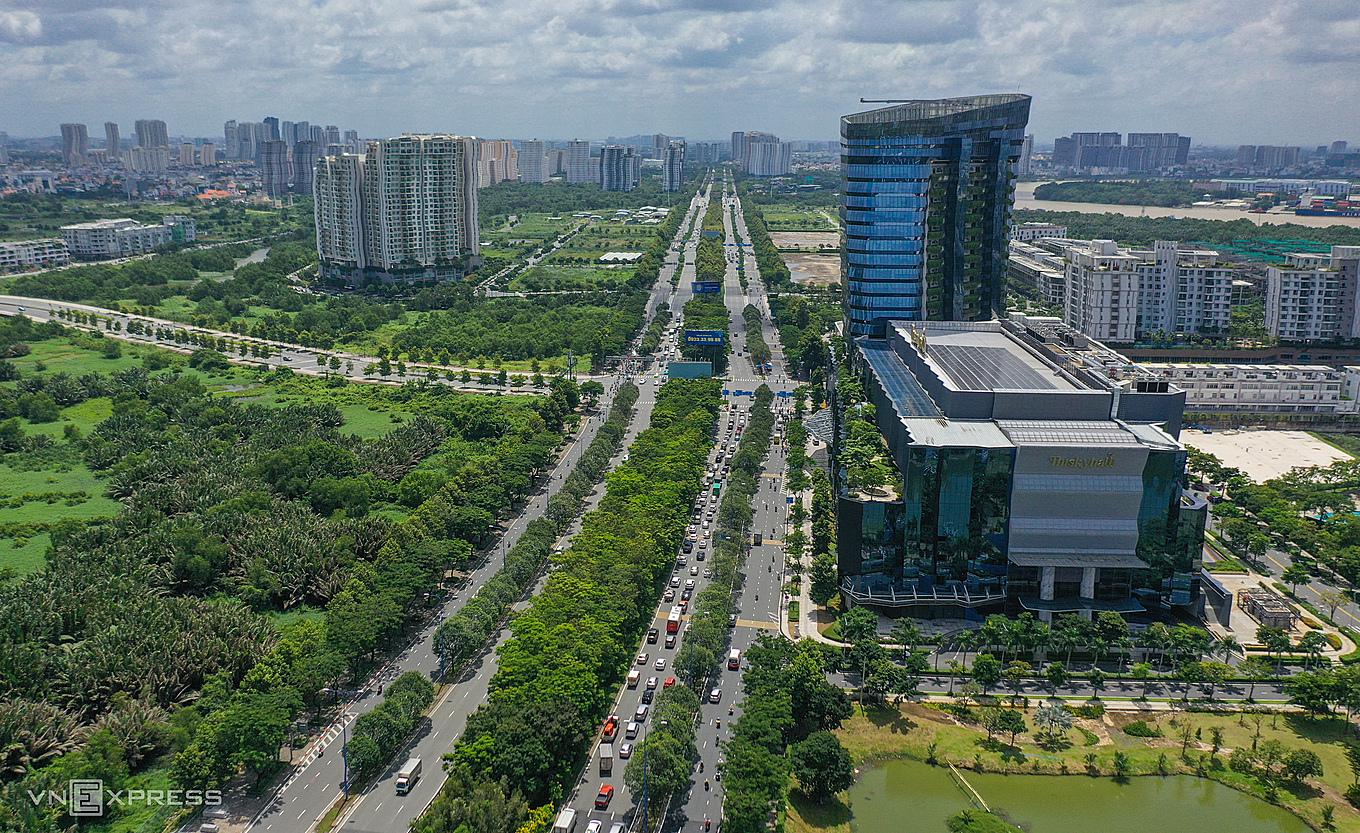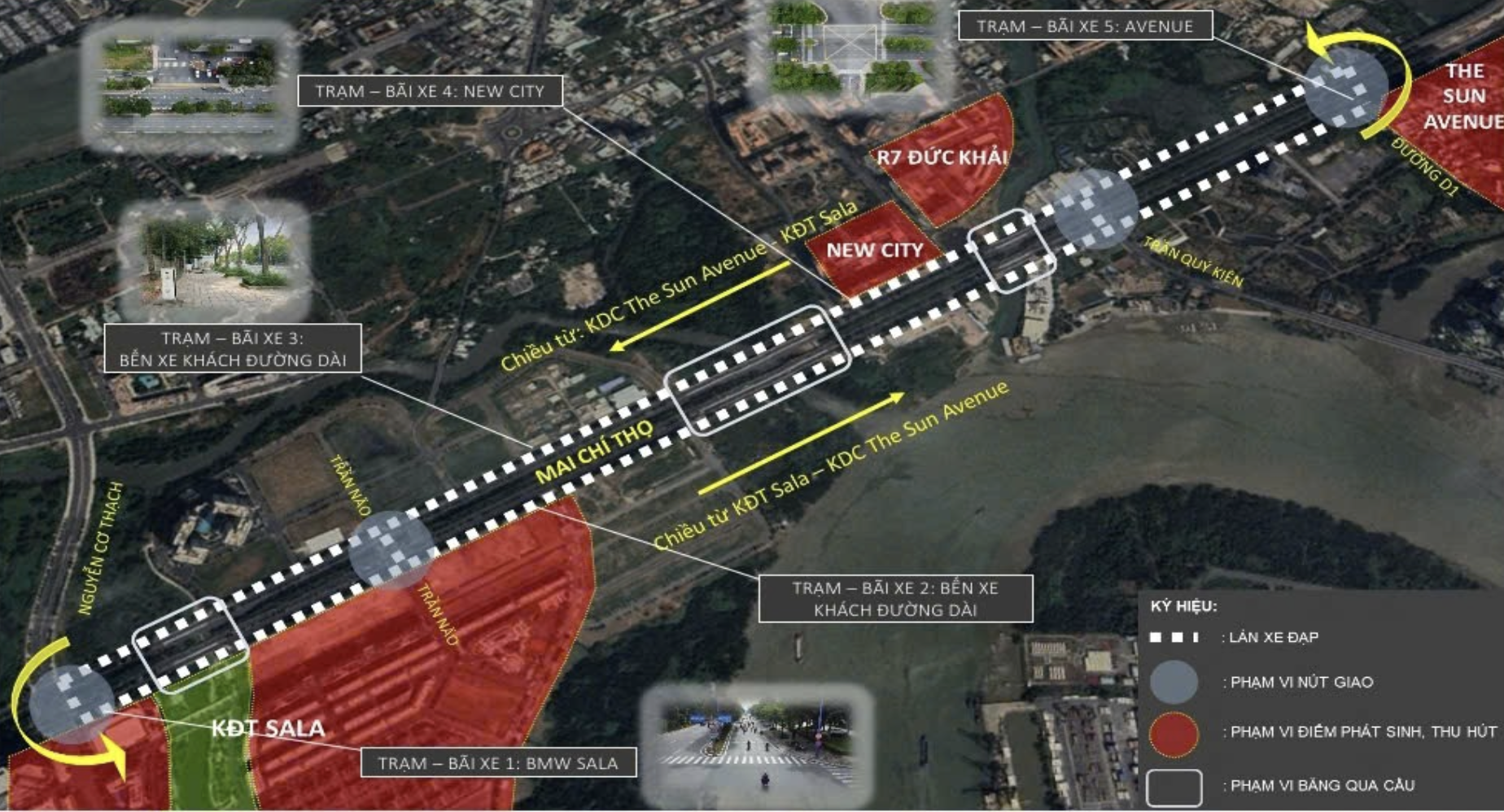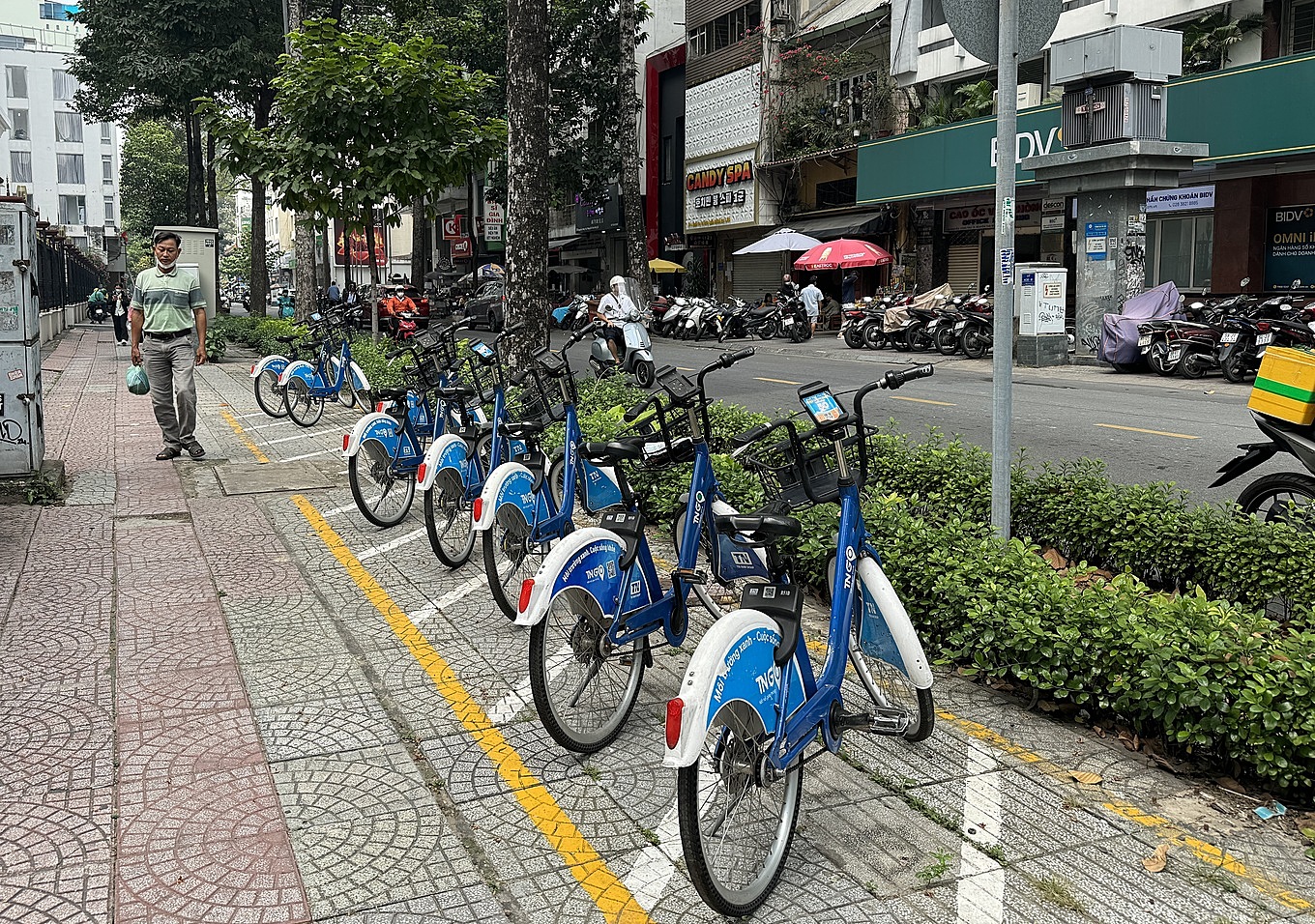The Urban Traffic Management Center (under Ho Chi Minh City's Department of Construction) is currently selecting a contractor for the project to build a dedicated bike lane. The project, with a budget of nearly 13 billion VND, is expected to begin in early October and be completed by the end of December of this year.
According to the Urban Traffic Management Center, the bike lane will be created from the existing sidewalks along Mai Chi Tho Boulevard, separated from car and motorbike traffic to ensure cyclists' safety.
The 5.8-km lane will be 2 meters wide, running from Nguyen Co Thach Street to D1 Street, with a maximum speed limit of 20 km/h. The surface will be marked with distinct lines for easy identification. Five public bike stations will be located along the route in densely populated areas such as Sala, New City, and The Sun Avenue, as well as near the Mai Chi Tho Bus Station, for convenient access.
 |
Mai Chi Tho Boulevard near Nguyen Co Thach Street. Photo: Quynh Tran |
Doan Van Tan, Director of the Urban Traffic Management Center, explained that Mai Chi Tho Boulevard was chosen for the pilot project because it's one of the city's largest thoroughfares and meets the necessary conditions. The dedicated lane will be entirely separate from existing car and motorbike lanes.
According to Tan, the bike lane will enhance the city's infrastructure, ensure safety, and meet the growing needs of residents in urban areas. The lane will also connect to the bus and metro systems, contributing to the development of public transportation and promoting a greener city. People can use bicycles for short trips, combine commuting with exercise, and enjoy the scenery.
Following the pilot phase, the city plans to extend the bike lane on Mai Chi Tho Boulevard to Vo Nguyen Giap Street in 2026, directly connecting to An Phu Metro Station. Nguyen Co Thach Street will also be renovated to accommodate a two-way bike lane, from the Mai Chi Tho intersection to the Saigon River Park.
"Upon completion, the Mai Chi Tho bicycle network will connect residential areas, parks, and entertainment venues like Sala, New City, and The Sun Avenue with the Ben Thanh - Suoi Tien Metro Line," Tan said.
 |
Plan for the dedicated bike lane on Mai Chi Tho Boulevard. Photo: Urban Traffic Management Center |
Dr. Pham Viet Thuan, Director of the Institute of Environmental and Resources Economics in Ho Chi Minh City, noted that bicycles are a common mode of transportation in many countries, supporting access to public transit. With low investment costs and minimal space requirements, bike lanes can be a starting point for a broader network, encouraging the use of environmentally friendly vehicles.
According to Thuan, the Ben Thanh - Suoi Tien Metro Line already allows folding bikes onboard, so if well-connected, this mode of transport will become a popular choice. However, for this to be feasible, the city needs comprehensive planning, improvements to intersections—where cyclists are most vulnerable—and surveillance cameras to prevent motorbikes from encroaching on the bike lanes.
Dr. Nguyen Huu Nguyen, from the Ho Chi Minh City Urban Planning and Development Association, suggested that the city should conduct thorough surveys of actual demand before expanding the project. Criteria for selecting routes should consider population density, connections to public transport, proximity to schools, hospitals, parks, and commercial centers. If implemented effectively, bike lanes will attract users and avoid a fragmented and disjointed system.
 |
A public bicycle station in downtown Ho Chi Minh City. Photo: Giang Anh |
Since 2021, Ho Chi Minh City has implemented a public bike-sharing program in the city center, attracting many users. However, the city still lacks dedicated bike lanes; cyclists currently share the road with cars and motorbikes, posing safety risks.
Historically, during the French colonial period, streets like Pasteur, Tran Hung Dao, and Nguyen Van Cu had dedicated bike lanes with clear dividers, but this feature gradually disappeared over time. In 2022, Ho Chi Minh City explored plans for bike and pedestrian lanes on Hanoi Highway (now Vo Nguyen Giap Street), but these plans were not implemented.
Meanwhile, since 2024, Hanoi has had a 4-km long, 4-meter wide bike lane along the To Lich River, passing through Cau Giay and Dong Da districts. This route connects to Lang Station on the Cat Linh - Ha Dong railway and Station 8 of the Nhon - Hanoi Railway Station metro line.
Giang Anh












